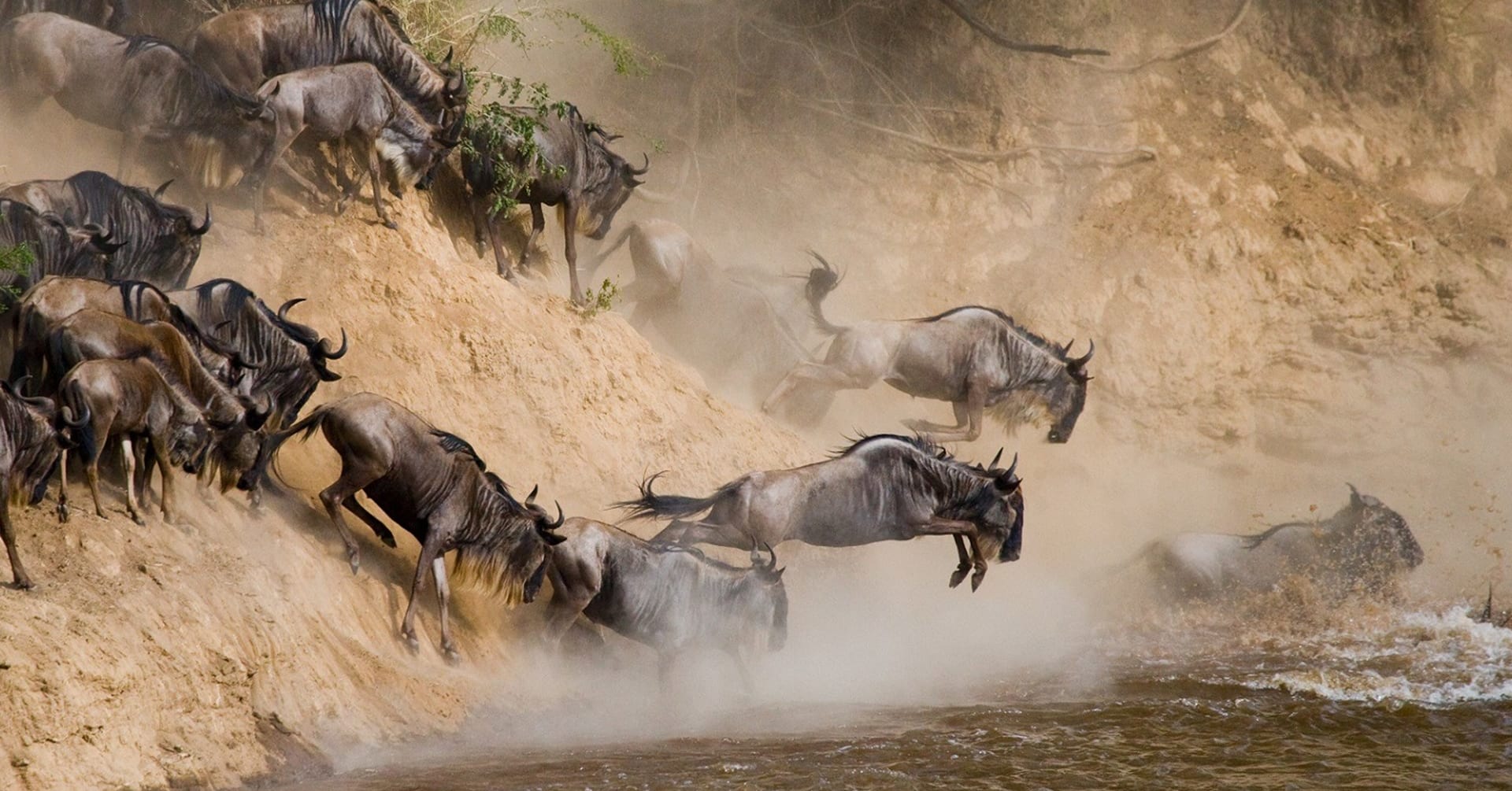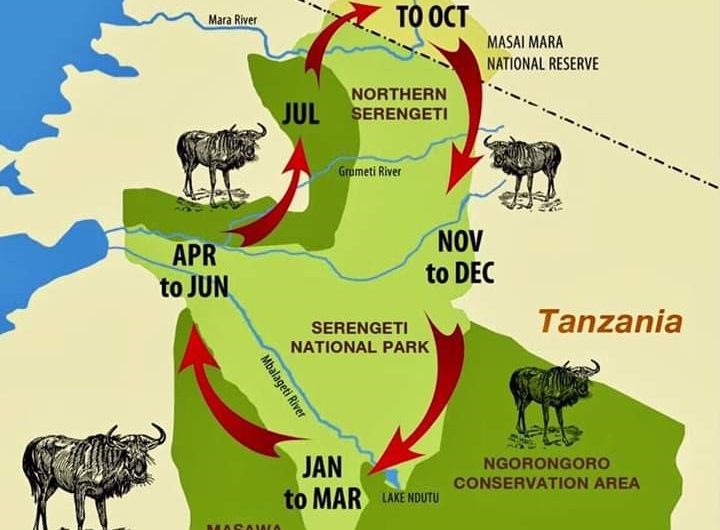The Greater Wildebeest migration in Serengeti Tanzania
The Greater Wildebeest Migration in Serengeti, Tanzania, is a remarkable natural event that draws tourists and wildlife enthusiasts worldwide. The migration is characterized by the movement of large herds of wildebeest, accompanied by zebras, impalas, grants gazelles, and Thomson’s gazelles, in search of water and green pastures. The migration follows an annual pattern, although the exact timing can vary due to changing weather patterns and the impact of climate change.
Here’s a breakdown of the migration’s key phases and the best times to witness them:
- January and February:
- The wildebeest herds are in the southern plains of the Serengeti, giving birth to their calves.
- Over 200,000 calves are born within a brief period of two to three weeks.
- Predators such as lions and hyenas are present, but the sheer number of calves makes it challenging for them to prey on all of them.
- March and April:
- The wildebeest herd moves north and west to the central and western reaches of the Serengeti, near Lake Victoria.
- The rut, a period of mating after complex territorial rituals by males, occurs during the long rains of April.
- April and May:
- This period can be challenging for travel as torrential rains flood the Serengeti.
- The animals are still in the southwest region.
- June and July:
- The Great Migration’s iconic “great crossing” occurs as the wildebeest cross the Grumeti River.
- July to early October:
- This period, during the dry season, is considered the best time to witness the Great Migration.
- The weather is warm and stable, and animals are abundant.
- The sparse vegetation and dried-up waterways force the animals to move north in search of food and water.
- November or December:
- Wildebeest and zebras are still present, but the movements are less pronounced compared to July and August.
- It’s advisable to avoid April and May due to the challenging travel conditions caused by floods.
It’s important to note that the traditional predictability of the migration is evolving due to changing weather patterns and the impact of climate change. Irregular rainfall in the Serengeti can disrupt the migration’s timing, leading to variations in the animals’ movements from year to year. Travelers should be aware of these changes and consider consulting with local experts or tour guides for the most accurate information when planning a visit to witness this incredible natural phenomenon.

